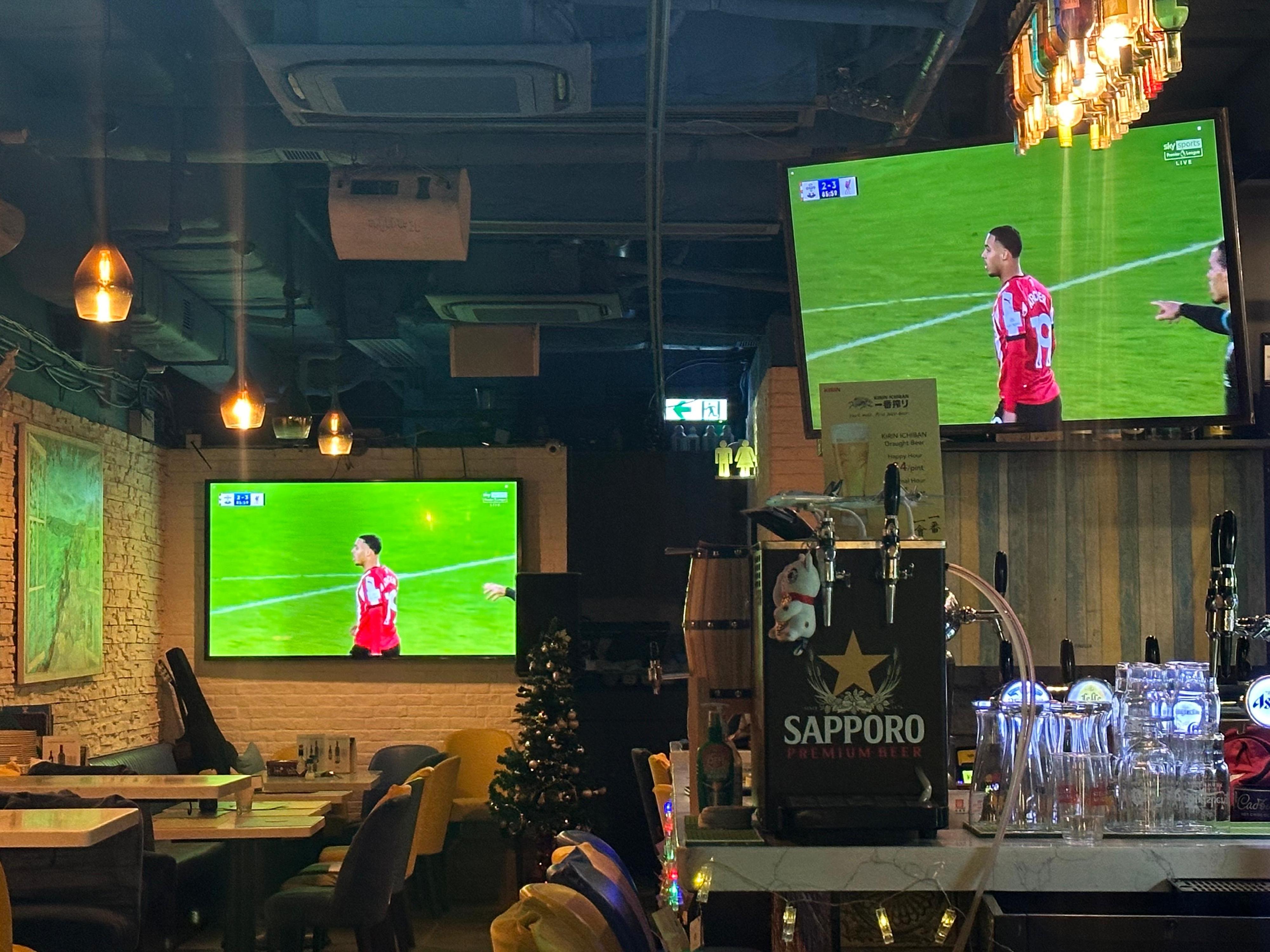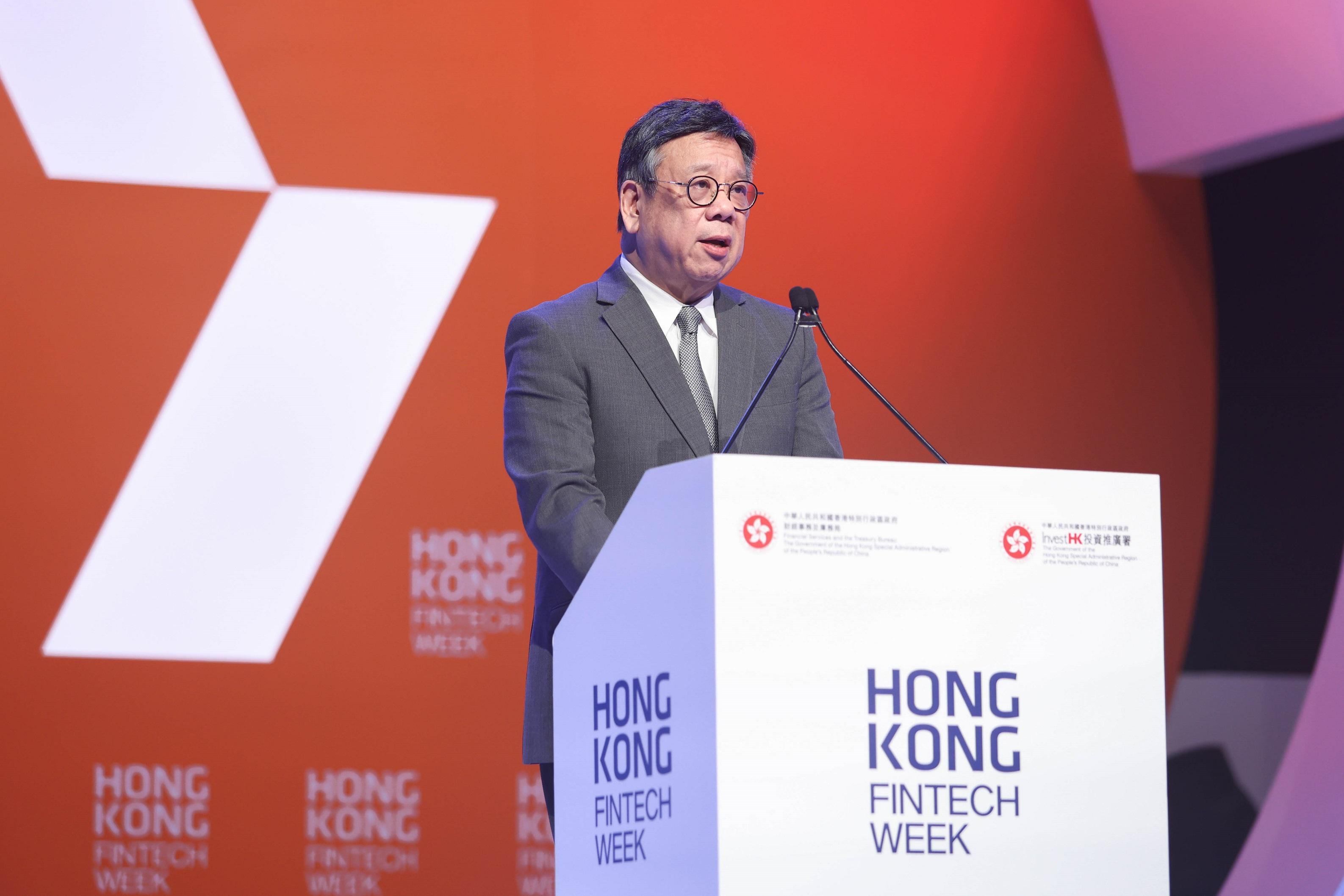Hong Kong FinTech Week (HKFW) 2024 concluded on November 1. The week commenced with the two-day main conference on October 28 and 29, featuring engaging panels, speeches and discussions among government officials, regulators, fintech innovators and industry leaders from around the world.
The entire week attracted over 37 000 visitors from over 100 economies and featured over 800 distinguished speakers, over 700 sponsors and exhibitors and more than 30 Mainland and international delegations. The annual flagship event was organised by the Financial Services and the Treasury Bureau and Invest Hong Kong (InvestHK), and co-organised by the Hong Kong Monetary Authority (HKMA), the Securities and Futures Commission (SFC), and the Insurance Authority (IA).
Steer the future of financial services
With this year’s theme “Illuminating New Pathways in Fintech”, the main conference featured eight themed forums on the latest technologies and cross-industry connections. These included the Global Forum; Artificial Intelligence (AI) & Advanced Tech Forum; Blockchain & Digital Assets Forum; Payments & Other FinTech Forum; InsurTech Forum; Green FinTech & Impact Forum; WealthTech & InvestTech Forum; and Hong Kong Connect Forum.
The Financial Secretary, Mr Paul Chan, opened HKFW 2024. He remarked that Hong Kong, with its singular advantages, has attracted fintech start-ups from around the globe. He said, “At present, we house more than 1 100 fintech and Web3 companies, an increase of about 15 per cent compared to last year. Hong Kong’s open, free and diverse environment, burgeoning innovation and technology ecosystem, full range of funding support, deep talent pool, pro-business and pro-innovation regulatory system, the Greater Bay Area application scenarios, and the ability to connect both China and the world are clear points of attraction.”
Looking to the future, as AI and blockchain technologies guide the development of fintech, Mr Chan emphasised the need to promote development while addressing potential challenges. “The Government has rolled out a policy statement to outline our policy stance and regulatory approach towards the responsible application of AI in financial services sector. We will continue to encourage the industry to capture opportunities brought by AI, and assess and mitigate its associated risks. The Government and the financial regulators will work closely with the industry to create a conducive and sustainable market environment,” he said with regard to AI.
The Secretary for Financial Services and the Treasury, Mr Christopher Hui, then gave a thorough presentation on the AI policy statement. Mr Hui said, “The Government will work hand in hand with the financial regulators and industry players to foster a healthy and sustainable market environment, thereby enabling the financial institutions to seize the opportunities and adopt AI in a responsible manner. Such efforts will promote the high-quality development of Hong Kong as an international financial centre. There are plenty of AI models and infrastructures available to financial institutions, accounting firms and solution providers. We encourage the financial services industry to make full use of these resources in the market.”
New policy address initiatives
The Secretary for Commerce and Economic Development, Mr Algernon Yau, attended the main conference and delivered his keynote address. He introduced Hong Kong’s multi-dimensional business advantages and an array of new business-friendly initiatives announced by the Chief Executive in his 2024 Policy Address, such as the recently amended Mainland and Hong Kong Closer Economic Partnership Arrangement, which provides more flexibility and convenience for Hong Kong enterprises (including fintech ones) to invest and do business on the Mainland. In addition, he encouraged fintech companies to set up or expand businesses in Hong Kong to enjoy Hong Kong’s advantages and the new initiatives.
The Under Secretary for Innovation, Technology and Industry, Ms Lillian Cheong, shared the initiatives in the Policy Address to fuel the sustainable development of the innovation and technology (I&T) ecosystem, such as the setting up of a HK$10 billion I&T Industry-Oriented Fund and redeploying HK$1.5 billion for optimising the I&T Venture Fund. “Hong Kong’s fintech mission continues to gather pace, backed by an I&T ecosystem that is growing in strength. Companies investing in Hong Kong are set to benefit from both the Mainland’s unique technological progress and global innovation.”
The Director-General of Investment Promotion of Invest Hong Kong, Ms Alpha Lau, also highlighted a series of financial services and fintech key measures from the Policy Address. “We will continue to actively expand and deepen our overseas networks, forge more financial co-operation with the Middle East, North Africa and Turkey region and the Association of Southeast Asian Nations, explore further collaboration with Islamic markets in finance, and organise more international financial mega-events in Hong Kong.”
The future of innovative technologies
The Chief Executive of the HKMA, Mr Eddie Yue, highlighted in his keynote speech the importance of embracing the digital frontier to drive the next phase of financial innovation, and shared lessons learned during the HKMA’s fintech journey: focus on real-world problems, be bold and be collaborative in driving innovation.
Mr Yue also emphasised two key areas of financial innovation for the next phase: tokenisation and AI. The HKMA is accelerating the development of asset tokenisation in Hong Kong through Project Ensemble to drive innovation in financial market infrastructure and Project Evergreen to promote a wider adoption of tokenisation in capital markets. The HKMA also announced a series of other initiatives covering various areas, including breaking down boundaries for payment, unlocking data potential, and empowering banks to go fintech, to spearhead the journey of fintech development.
The Executive Director, Intermediaries of the SFC, Dr Eric Yip, noted in his keynote address how virtual assets are at the forefront of every financial regulator’s agenda today. Hong Kong currently has three SFC-licensed virtual asset trading platforms (VATPs), with 15 more applications being processed. Investors can soon expect more licensed platforms that are compliant with the SFC’s robust investor protection measures. Dr Yip also highlighted the SFC’s initiatives in fostering a vibrant virtual asset market in Hong Kong, including implementing a swift licensing process for VATPs, establishing an official consultative panel for all licensed VATPs, developing further regulatory building blocks for related regulation, and supporting tokenisation initiatives.
The IA is also launching the Cyber Resilience Assessment Framework under the Guideline on Cybersecurity to bolster insurers’ operational resilience and an industry survey in 2025 to facilitate the development of a robust but flexible regulatory framework to spur the fair, transparent and ethical use of AI. With the significant protection gap in Asia, regulators and enterprises should focus on measures that enhance resilience in the face of increased climate and cyber risks, according to the Chief Executive Officer of the IA, Mr Clement Cheung.
Working towards a shared future
Hong Kong’s international collaborations shared the spotlight at this year’s main conference. In a panel discussion on “Fintech in Hong Kong & the Middle East: New Opportunities”, the Under Secretary for Financial Services and the Treasury, Mr Joseph Chan, and Deputy Director General, Financial Sector Development Program of Saudi Arabia, Mr Mohammed AlSarrani shared the benefits of increasing collaboration between the two markets, specifically when it comes to green finance, fintech, Web3, and family offices.
According to Mr AlSarrani, Saudi Arabia’s position at the centre of three continents, along with its economic transformation, offers unique investment opportunities for companies and financial institutions in Hong Kong and vice versa. “I believe both Hong Kong and Saudi Arabia offer unique economic landscapes that can benefit significantly from collaboration.”
In the panel “Harmonising Regulation & Governance Across Jurisdictions”, the Chief Executive Officer of the Virtual Assets Regulatory Authority, Mr Matthew White, and the Minister Counsellor for Economic and Financial Affairs of the European Union, Mr Sabino Fornies-Martinez, discussed how different jurisdictions balance innovation and regulation in the virtual assets industry, with case studies from Dubai and the European Union. Both Mr White and Mr Fornies-Martinez agreed on the importance of international collaboration to avoid regulatory arbitrage and ensure seamless cross-border operations.
The technology opportunities in Mainland China were of specific interest to speakers. In the “FinTech Frontier: Exploring Accelerated Cross-Border Technology Integration” panel discussion, speakers noted an 80 per cent increase in cross-boundary travel between Hong Kong and Shenzhen, along with a 70 per cent rise in cross-boundary digital payment usage in Mainland China. A mix of fintech advancements from Mainland and international innovation companies in Hong Kong can offer better solutions for cross-boundary payments. The panel also emphasised Hong Kong’s role in the Guangdong-Hong Kong-Macao Greater Bay Area (GBA) technology integration, stating that Hong Kong is a window for Chinese companies to reach global markets. By leveraging Hong Kong as a “super connector” for international engagement, it could enable GBA fintech companies to reach global markets and attract talent from around the world to the region.
Global Fast Track winners
The semi-finalists of the Global Fast Track were also invited to Hong Kong to showcase their business solutions on stage during HKFW, with the grand finale taking place during the main conference.
This year’s Global Fast Track Awards was the most competitive ever with over 500 competitors from 56 global economies pitching to be crowned fintech champion. The 2024 edition of the global pitching contest featured five verticals: fintech, artificial intelligence, ESG/green, blockchain, and insurance/healthtech.
The seventh edition of the annual competition announced two winners for the first time, as this year featured two categories:
- Winner of the Global Fast Track Mainland China Category was: Datatist
Shanghai-based AI predictive analytics software solutions for banking and securities clients. Its AI platform comprises hundreds of models to ensure operational effectiveness, while maximising ROI and efficiency.
- Winner of the Global Fast Track International Category: WeavAir
Singaporean provider of cutting-edge environmental, social and governance (ESG) data analytics software specifically designed for financial institutions and fund managers. Its unique platform combines satellite imagery networks, predictive AI models, and decision support systems to deliver real-time, highly accurate data-backed ESG decision-making.
The Global Head of Financial Services, Fintech & Sustainability at Invest Hong Kong, Mr King Leung, presented the awards to this year’s winners and expressed his hope that more emerging start-ups would achieve even greater global success through Hong Kong.
About Hong Kong FinTech Week
Hong Kong FinTech Week 2024, organised by the FSTB and InvestHK, and co-organised by the HKMA, the SFC and the IA, is Asia’s global financial technology event for scaling new heights. The week-long event featured a series of community activities across Hong Kong and Shenzhen, including a GBA Tour, satellite and networking events, lifestyle activities, and workshop. The event also featured the world’s first-ever Web3x3 Basketball Game, hosted by FinTech Basketball League. For more information, please visit
www.fintechweek.hk.
About InvestHK
InvestHK is the department of the Hong Kong Special Administrative Region Government responsible for attracting foreign direct investment. It has set up a dedicated fintech team in Hong Kong to attract the world’s top innovative fintech enterprises, start-up entrepreneurs, investors, and other stakeholders to set up and scale their business via Hong Kong into Mainland China, Asia, and beyond. For more information, please visit
www.hongkong-fintech.hk.
read more

















